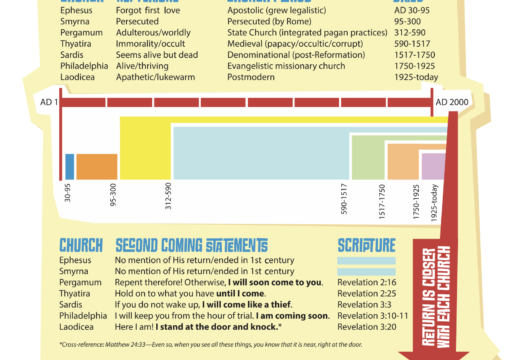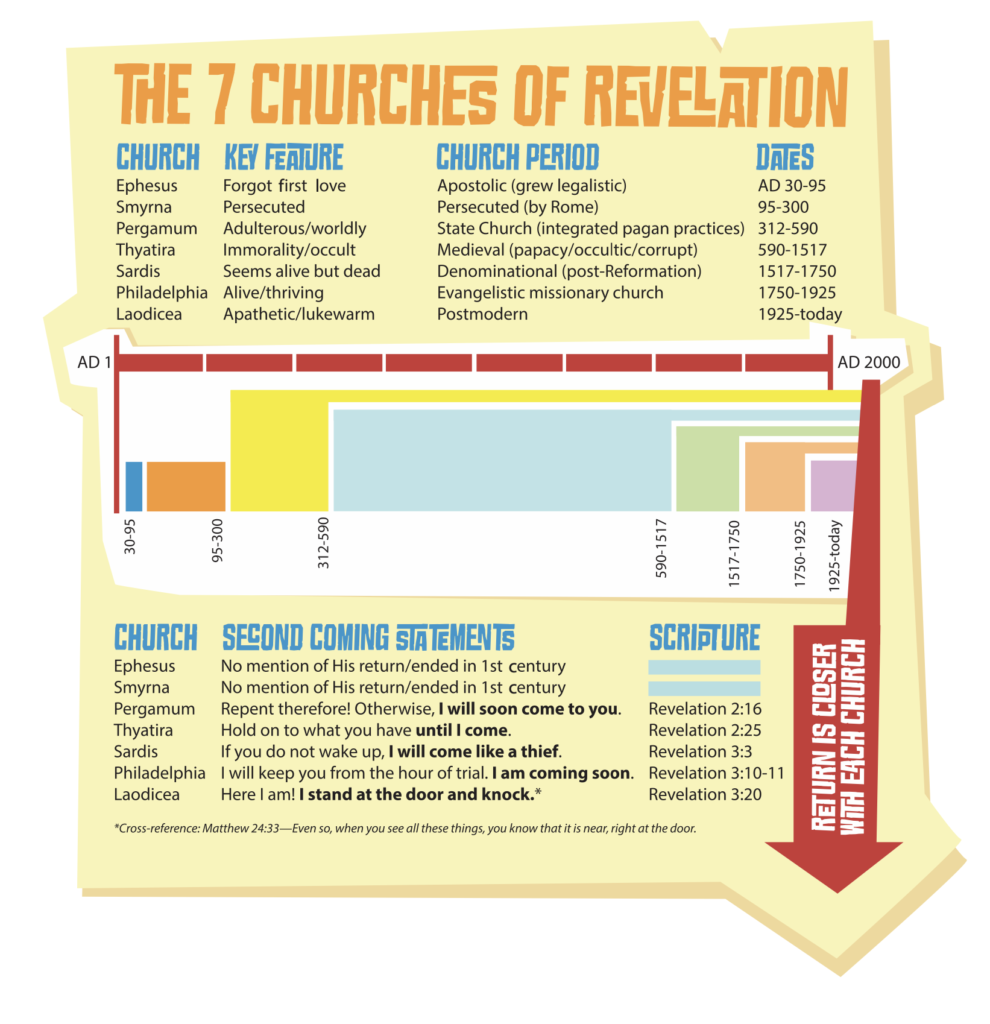
There are areas of theology that are fundamental to the faith (like the doctrine of the trinity, the deity of Jesus, the virgin birth, and the substitutionary death of Jesus for our sins to name a few), but there are also secondary details that are important doctrine but not fundamental for salvation. Then there are even tertiary details in Scripture that good people debate and study, but without disagreeing sharply or falling out over. Today I want to talk about one such issue.
I’d like to highlight a fascinating point about the churches John addressed in Revelation 2–3. Many prophecy experts agree that the seven churches were not only real churches of that day but represent churches all through the church age. They also say it’s possible these churches prophetically foreshadow seven distinct church periods during the church age, and therefore are part of the prophecies of Revelation.
Literal Application
The seven churches John wrote to were literal churches. All of them were located in different areas of modern-day Turkey. The warnings and commendations given to these churches were clearly relevant to those specific churches at that specific time.
Secondary Application
The warnings and commendations to the seven churches also highlight characteristics that can be found in churches at any given time in history. The principles presented can help believers evaluate churches, and even themselves. In this case, chapters 2 and 3 can serve as guardrails and guiding principles that help churches to stay the course and remain faithful to the Lord until he comes again.
Prophetic Application
Finally, the seven churches may also represent seven periods of church history between John’s time and the beginning of the tribulation. Some early church leaders believed this would be the case, and history has borne it out as we look through at rearview mirror and the church in our day. The strengths, weaknesses, cultural conditions, and chronology of the seven literal churches John addressed very closely mirror those of the seven chronological stages of church history from John’s time until today.
Keep in mind that you will find all seven types of churches in each period of the church age, but a careful study of church history shows that each period is also dominated by one type of church—and the sequence of these dominant types of churches happen to line up in the same order as the seven churches presented in Revelation 2–3. Not all prophecy experts agree on the exact dates or descriptions, but there is quite a broad consensus that this prophetic fulfillment of the seven periods of church history is valid. As with other areas of minor disagreement, no core theologies are affected by opposing views on this topic. Consider the chart below.

It is interesting to note that the only churches Jesus mentions coming back to (for blessing or judgment) are the churches at Pergamum, Thyatira, Sardis, Philadelphia, and Laodicea. These five church periods also happen to still be in existence today. The first two are not.
